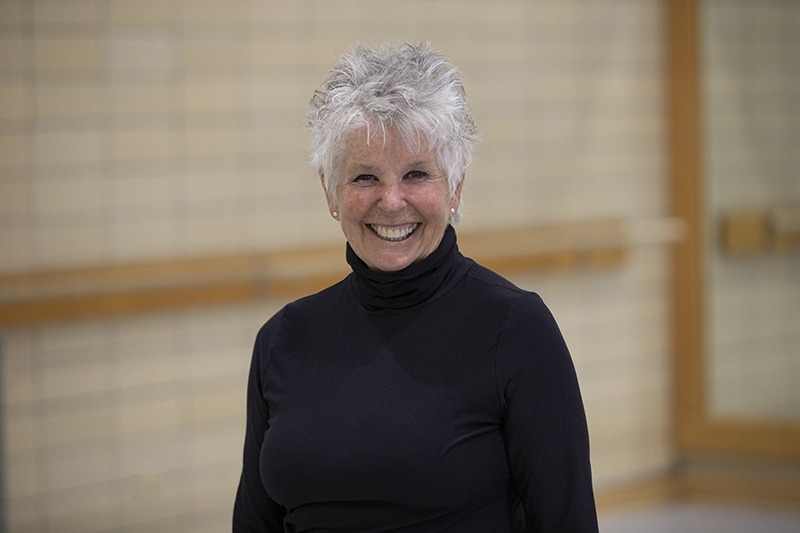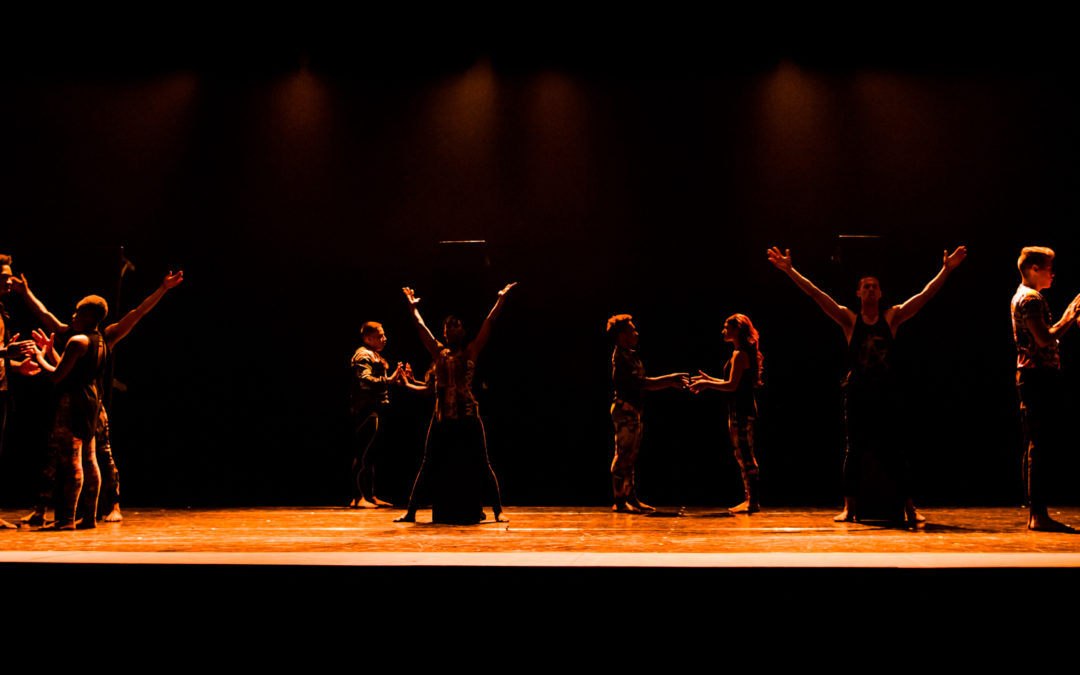For the past 28 years, Paula Frasz has been designing dances that mirror her students, their experiences and the world we all live in.
 “All artists reflect wherever they are,” she said. “I don’t just see our students in the classroom. This is my community. This is their community and their surroundings.”
“All artists reflect wherever they are,” she said. “I don’t just see our students in the classroom. This is my community. This is their community and their surroundings.”
As the makeup of the students in the dance program has become more diverse, Frasz has challenged herself to create works that reflect her students and their world.
For all of her efforts over nearly three decades, Frasz has been named a 2021 Presidential Engagement and Partnerships Professor.
In 2018, students from the NIU Dance program earned an invitation to the Kennedy Center in Washington D.C. to perform, “ENUF” a dance choregraphed by Frasz. The dance had been judged to be the best performance at the Central Conference of the American College Dance Association (ACDA).
“In the summer of 2016 I was sitting in my car waiting for the endless train to pass by in downtown DeKalb,” Frasz said. “The news was all about another young black man shot by police, and the Colin Kapernick kneeling situation during the national anthem. One of the train cars that went by had a graffiti tag on it that said ENUF in capital letters.
“I sat there and thought to myself, ‘Yes, I agree. ENUF already.’ I decided at that moment, because we have a wonderful group of minority dancers, that my next piece of choreography would be a dance addressing the history of oppression, suppression and violence against minority groups. I am an old hippie and protest is in my blood. It was time to speak out and my forum is movement.
“The dance, “ENUF,” was born.”
For Frasz, ENUF’s recognition and selection for the Kennedy Center performance was especially meaningful.
“I made it my mission to attract and train minority students as professional dancers, and to include dances in our concerts that were specifically choreographed for Black, Hispanic and other minority casts. To see seven Black, three Hispanic and one white dancer perform it with such heart, helped me realize the meaningful message of that dance.”
One of those who performed “ENUF” at the Kennedy Center was Amber Echols, a 2018 graduate of the dance program.
“I didn’t meet Paula until I transferred to NIU in the fall of 2016, but I had already heard of her and how amazing she is,” Echols said. “When she sees something in a dancer she pushes them to become better than they can ever imagine. I have studied so many types of dance styles, but once I was under her wing, I started to learn so much about the history of different minority dances. She took the time to learn for herself so she could help us understand it.”
In 2019, Frasz wrote the dance, “Your Excellency” inspired by black Union soldier James Henry Gooding’s letter to President Abraham Lincoln. Gooding had been born a slave in 1838 but as a child his freedom was purchased, perhaps by his father, and he was sent to school in New York City. In 1863, he enlisted in the Union Army and wrote letters that were published in his local paper. But it was a letter he wrote to President Lincoln that is most famous. Gooding wrote to Lincoln about the disparity of pay in the army, with Black soldiers earning three dollars less per pay period than white soldiers did. “We have done a Soldiers Duty,” Gooding wrote, “Why can’t we have a Soldiers pay?”
Frasz wrote “Your Excellency” with a specific cast in mind.
“We had these three fantastic male dancers and a wonderful actor,” she said. “I wanted to give them something, I wanted to give them a voice. I wanted to present it in a way where these four talented Black men could express anger and frustration, not in a rage. The way the letter was written, because it was the 1860s, the language is very proper, very respectful to President Lincoln. I could use that to make the movement contrast and really dynamic to show the anger and frustration.”
“Your Excellency” was performed at the American College Dance Festival at Western Michigan University at the beginning of March 2020, one of the last live dance performances before the COVID-19 pandemic.
The dance was first performed in November 2019 in conjunction with the NIU Art Museum exhibition, Exploring Aspects of War In and Through the Visual Arts.
Our BIPOC dancers are extremely talented and my work is enhanced by their skill,” Frasz said. “As our dance program attracts more highly skilled BIPOC dancers, my research also has become more focused. What better opportunity to give voice to an underserved population than to place their issues and concerns on stage? My personal growth has been profound, as the students generously share their cultural experiences and viewpoints, which helps me develop choreographic material to best suit them.”
This post originally appeared in the April 15, 2021 edition of NIU Today.

